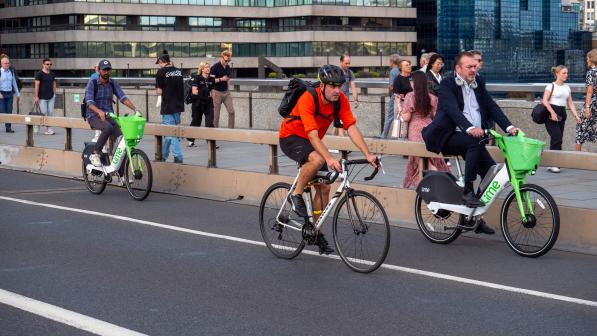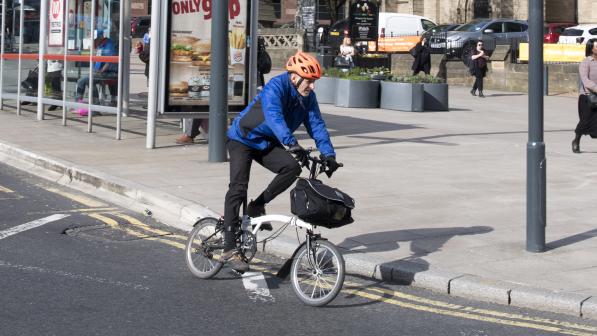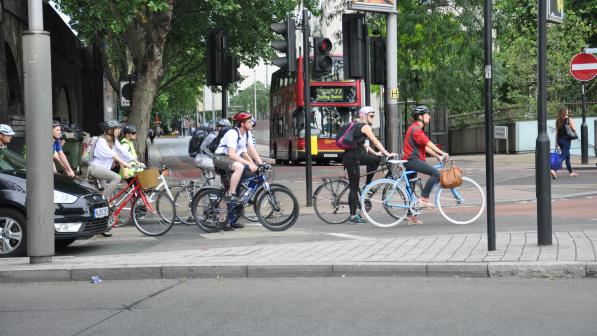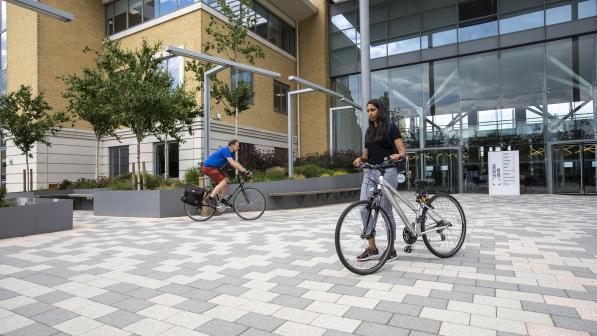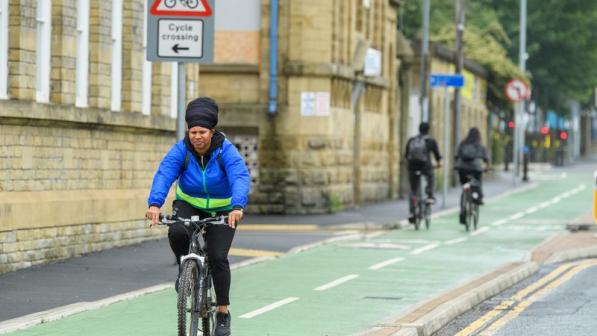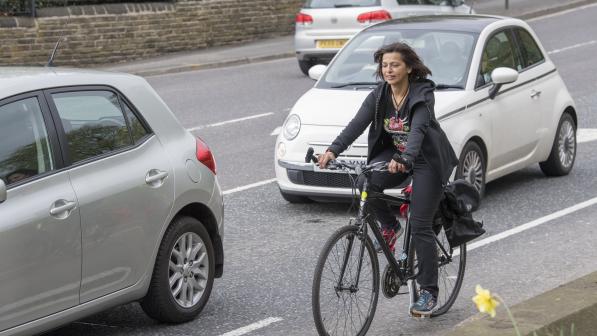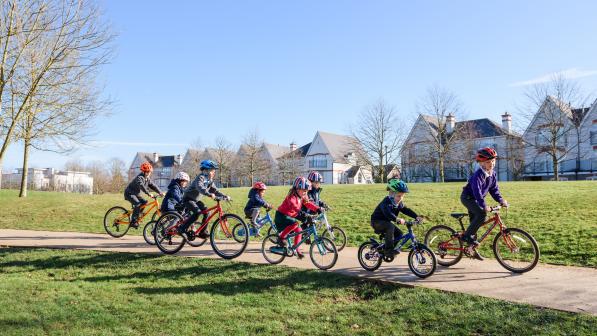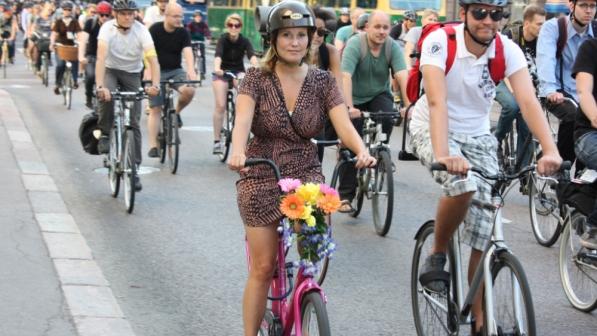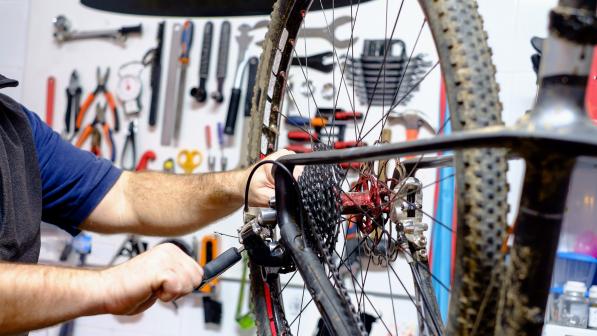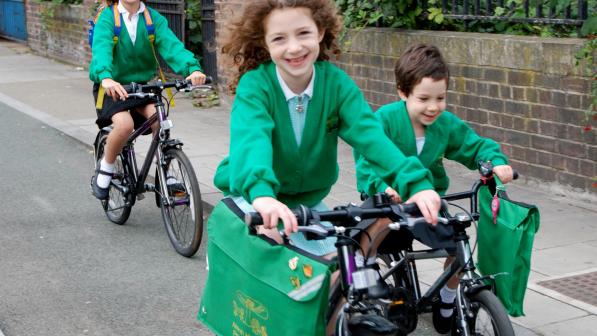How to cycle to work – or school – with confidence

Few things in life offer almost complete benefits, but becoming a cycle commuter is one decision that has very few drawbacks. For the wider world, the cycle commuter helps to reduce traffic fumes and congestion.
For family, teachers and employers, the cycle commuter often spends less time stuck in traffic or on trains and buses and is more productive once reaching work or school. And for cycle commuters themselves, adopting the habit of riding their bike each day will make them healthier, fitter and happier. So what’s stopping everyone?
I can understand why any novice commuter might feel nervous about mixing with cars and general road traffic. Many people tend to think that cyclists are at the mercy of other road users.
However, the roads are considerably less hazardous for competent cyclists who know what they’re doing. Other road users may command bigger vehicles but there is still a lot cyclists can do to influence the way others behave towards them. The more confident you are on the road, the safer you’ll be. So here are some simple steps you can take to make your cycle commute a safe and pleasurable experience.
Pick your route
The first thing to do is pick a route that you enjoy and doesn’t overwhelm you. The beauty of a city or town landscape is that there is a myriad of rat-runs, cycle paths, park routes and backstreet passages that you can take to avoid traffic and make your journey more pleasant.
Don’t mix with other road users and their queue-induced pent-up frustration on the main road just because that’s the only way you know. Nip down a side street and do some urban exploring – you might just find a gem of a route.
Try Cycling UK’s Journey Planner for a range of routes or take a look at our Cycle A-way to find cycling maps and guides for your area.
Take control
It’s a virtuous circle: the more you ride a bike, the better your bike control, the safer you feel, the more you enjoy cycling, so the more you ride your bike.
The cycling games and exercises you might have done as a youngster for a cycling proficiency award are just as valid now – take every chance you can to improve your handling techniques. In particular, practise looking over your right shoulder, signalling and moving out. At the weekend, consider taking your commuting bike on some gentle off-road trails with loose surfaces to get a feel for more advanced bike control.
Stay away from the kerb
This is a hugely important piece of advice and one that many young or nervous riders find counter-intuitive. Any cyclist who is riding tight to the side of the road is actually more, rather than less, likely to have an accident.
They might run up against the edge of the pavement and come off their bike. Drivers are more likely to chance their luck and try to overtake a kerb-crawler in gaps that aren’t suitable. And the area near the kerb is where broken glass and other dangers lurk. Ride a good 3ft or 1m from the kerb and be confident that drivers will treat you with respect.
Lorries
Lorries are one of the biggest dangers for cyclists in city environments, and if you’ve ever sat in a lorry cab you’ll see why. From their seat, lorry drivers are faced with incredibly large blind spots, extending 6ft in front of the vehicle and running down a large portion of the vehicle’s sides.
Meanwhile, current cycling infrastructure points cyclists right down these blind spots, meaning many riders creep down them to get to the head of the queue of traffic. Until we have more direct vision lorries on our streets, the easiest and safest thing is to treat HGVs and buses with the utmost respect, stay behind and refrain from sneaking down the left side.
Side junctions
After left-turning lorries, another common cause of collisions are vehicles entering the main carriageway from side roads, particularly on the left. Sometimes a driver simply won’t see a cyclist coming and pull out. To combat this, the cyclist can do a couple of things:
- Ride away from the kerb (again!). Studies suggest drivers only really register traffic coming towards them in expected areas of the road. If you are riding in the gutter, they’re not expecting traffic there, so your presence isn’t registered
- Make eye contact with the driver pulling out. Then you’ll be able to deduce if they have spotted you
Parked cars
Parked cars are a lesser known but frequent danger for cyclists, with unwitting motorists opening their doors into the path of a rider. Look through the back windscreen of a parked car as you approach to see if anybody is inside, and give parked cars a wide berth in case a door does swing open.
Cycle lanes
Choose your cycle lanes wisely and don’t feel constrained by a couple of lines painted on the tarmac – some cycle lanes simply aren’t fit for purpose. Drivers are required to give cyclists as much room as they would a car when they overtake in all circumstances (Rule 163 in the Highway Code). However, many seem to think as long as they’re not driving in a cycle lane, that’s OK.
If a cycle lane looks particularly narrow, ride on the outside line demarking it – that way drivers will have to give you proper room.
Riding with children
Any sensible parent will want to be there when their child first cycles on the road. The Highway Code allows two cyclists to ride side by side. Parents should ride on the outside, but be courteous to other road users and go single file when you need to. In fact, single file most of the time isn’t a bad idea anyway, as it allows your child to concentrate on what they’re doing.
When you do go single file, make sure you cycle about 2 metres behind and 1ft or 30cm further towards the centre of the road than your child. Just as at ‘meet the teacher evenings’, it’s time to act as their human shield!
